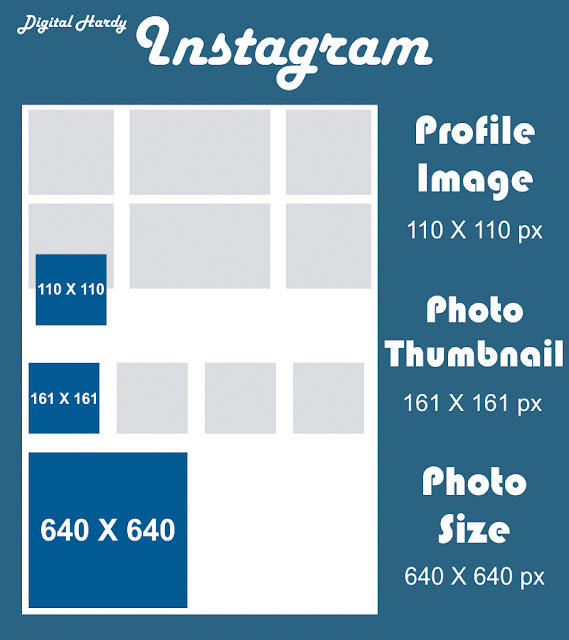With over 1.55 billion monthly active users, Social media has become the pillar of the online experience. Hundreds of millions of people are interacting and engaging on Social Media.
Each Social Media is having
particular size for their profile picture, cover page, Banner, Timeline photo n
many more.
Here we will discuss the main 8 Social Media Channel's Image Sizes.
Here we will discuss the main 8 Social Media Channel's Image Sizes.
Let’s start with the World’s number
one and most used Social Networking Channel “FACEBOOK”.
FACEBOOK
Facebook is having Profile Picture,
Cover Picture & timeline Banner/Picture.
Profile Picture represents account owner or organization. Which will appear on your timeline layered over your Cover Photo. It is also appear when you post to other walls, comment on posts or when you are searched by Facebook Open Graph.
Profile Picture represents account owner or organization. Which will appear on your timeline layered over your Cover Photo. It is also appear when you post to other walls, comment on posts or when you are searched by Facebook Open Graph.
- Facebook Profile Picture Size : 180 * 180 px
- Facebook Cover Image Size : 851 * 315 px
- Facebook Timeline Picture Size : 1200 * 630 px
GOOGLE +
Google+ is having special feature as
you upload your image in a square format & then going to render it into
your page as a circle. So always choose the photo which doesn’t cutout your
best corners. Maximum up to 20 MB & 5200 x 5300 pixels image i was able to
upload as a profile image.
Google+ cover photo is the largest
photo on your page. So choose your photo wisely because it’s a great opportunity
to showcase your product, brand, services and offers of your company.
- Google+ Profile Picture Size : 250 * 250 px
- Google+ Cover Image Size : 1080 * 608 px
- Google+ Timeline Picture Size : 497 * 279 px
- Google+ timeline picture size with Link : 150 * 150px
According to Twitter Guideline profile picture is
square & recommended size is 400*400 which displays at 200*200. Image
Formats are JPG, GIF, and PNG. Header photo recommended size is 1500 * 500px of having maximum file size 10 MB
in JPG, GIF and PNG format.
- Twitter Profile Picture Size : 400 * 400 px
- Twitter header Image Size : 1500 * 500 px
- Twitter Timeline Picture Size : 440 * 220 px
YOUTUBE
According to YouTube guidelines, they
are having mainly two important aspects. Channel Cover Photo & Video Upload
thumbnail. There are a lot of different platforms & devices users can stream YouTube
on so it is very important that your brand has a photo optimized.
Video you upload on YouTube must maintain a 16:9 aspect ratio. In order to maintain full HD quality, your dimension must be at least 1280 * 760 pixels.
Video you upload on YouTube must maintain a 16:9 aspect ratio. In order to maintain full HD quality, your dimension must be at least 1280 * 760 pixels.
- YouTube channel icon Size : 800 * 800 px
- YouTube Channel Cover Size : 2560 * 1440 px
- YouTube Video Uploads Size : 1280 * 760 px
LINKED IN
LinkedIn is having different type of
images to represent the different purpose like BG Image, Profile Picture,
Standard logo, Career cover photo, Banner image.
A new feature for your personal profile is BG image, its little great thing to
look your profile great. Standard logo is your business logo which is appeared
just below your Brand Name. Career cover photo is the largest image of all the
images in this channel, so choose wisely to attract the clients & employees
to your brand and business. Banner image is new feature which appears when user
visits your brand page.- LinkedIn BG Image Size : Between 1000*425 to 4000 * 4000 px
- LinkedIn Profile Image : 400 * 400 px
- LinkedIn Career Cover Photo : 974 * 300 px
- LinkedIn Banner Size : 646 * 220 px
Pinterest is having mainly three
type of images: Profile image, Board Display, Pin Size.
Creating board in Pinterest is very important. Choose the relevant image that describe that board to your audience. Pins are kind of images of particular board.
Creating board in Pinterest is very important. Choose the relevant image that describe that board to your audience. Pins are kind of images of particular board.
- Pinterest Profile Image : 165 * 165 px
- Pinterest Board Image : 222 * 150 px
- Pinterest Pin Size : 236 px Width
Instagram is having Profile Picture,
Photo Thumbnail & Photo Size. One important point is to keep the aspect
ratio 1:1 for all.
- Instagram Profile picture : 110 * 110 px
- Instagram Photo thumbnail : 161 * 161 px
- Instagram Photo Size : 640 * 640 px
TUMBLR
Tumblr is a platform where user can
put the pictures, texts, quotes, links n many more.
- Tumblr Profile image : 128 * 128 px
- Tumblr Image posts : 500 * 750 px
Now you are ready with the all stuff in social media channels.



























